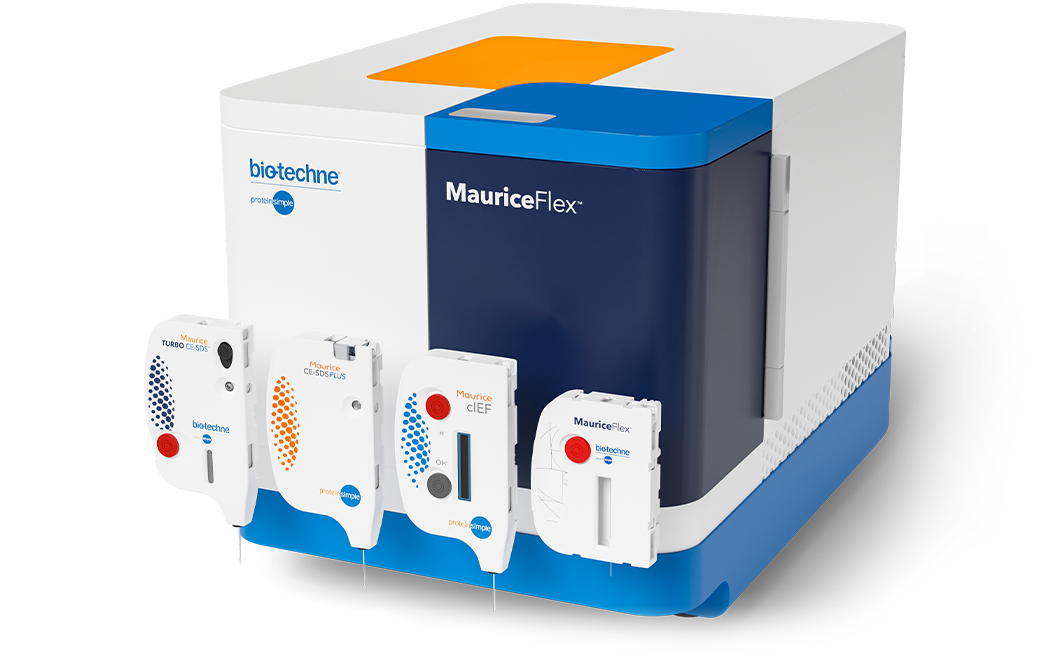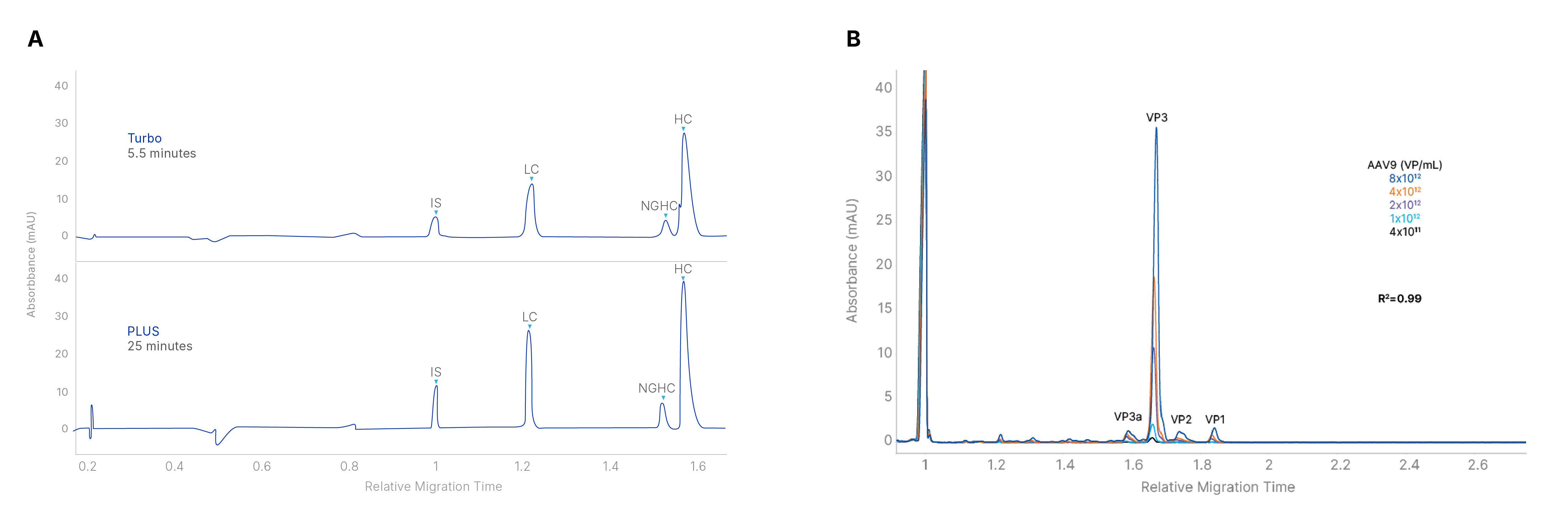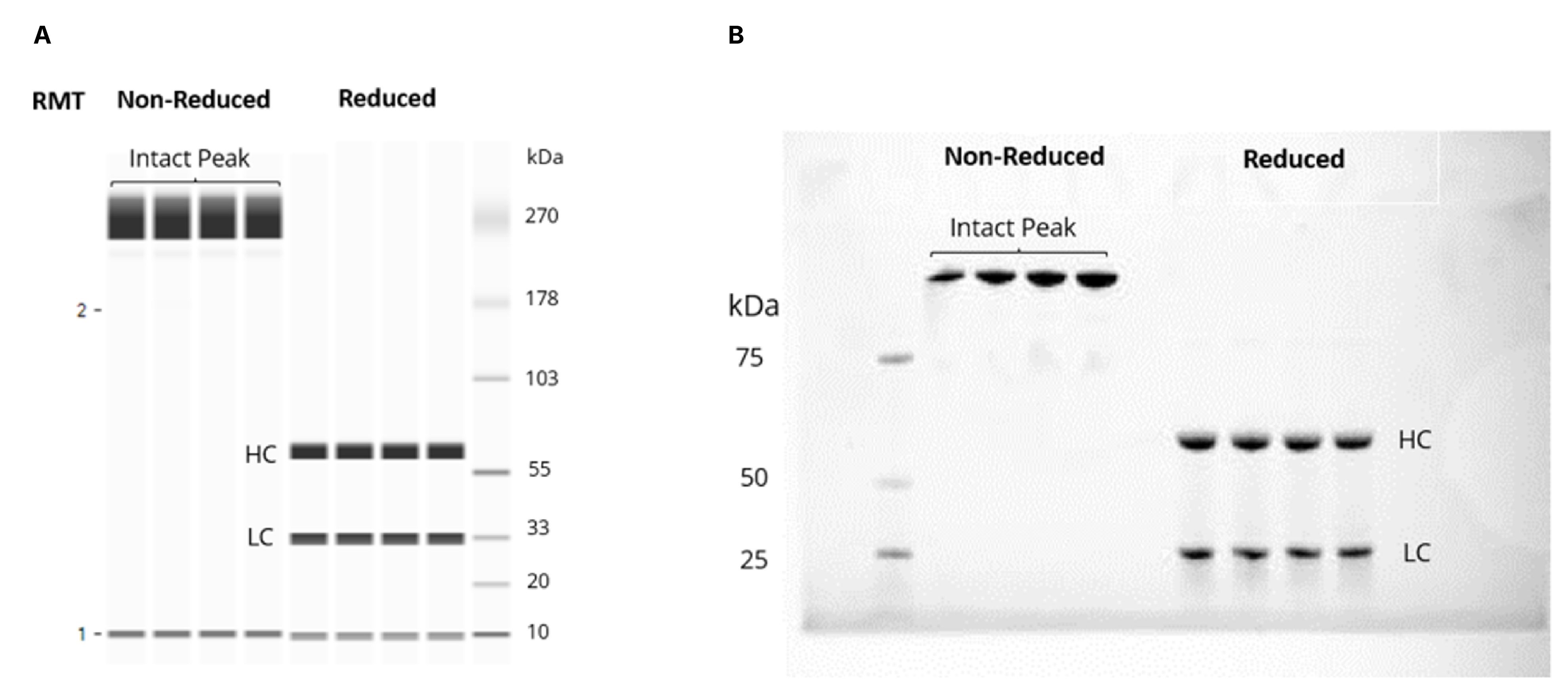The word “technology” implies an improvement on some or all of these aspects – quality, speed, efficiency, and ease. Technologies across all industries have evolved with time, with almost every major stage of evolution significantly changing how we operate in a particular sphere. This article explores the evolution of analytical technologies based on SDS (sodium dodecyl sulfate) for the size-based separation of proteins in molecular biology and biopharmaceutical development.
While easily achieved in 2025 through various techniques, the separation of proteins based on size was once a challenge, posing a massive roadblock in molecular biology research. As a result, the 1960s and 1970s witnessed the development of SDS-PAGE (sodium dodecyl sulfate-polyacrylamide gel electrophoresis). Pioneered by Ulrick K. Laemmli, who leveraged the earlier works of Jake Maizel, Leonard Ornstein and Baruch Davis, gel electrophoresis was one of the first methods developed to successfully separate proteins based on their molecular weight1,2,3. Interestingly, the initial days of this method involved casting polyacrylamide gels in tubes, which needed to be cracked open with a hammer for the gels to be sliced and dried before staining4. Most scientists can’t imagine doing that today, but at that time the method provided a breakthrough in understanding protein-protein interactions. Nearly two decades later, the development of slab gels proved to be a drastic improvement to this method, enabling the analysis of multiple samples5. Unsurprisingly, as these methods quickly gained traction within the research community with Laemmli’s work being cited over 300,000 times, SDS-PAGE became the gold standard for separating proteins. From undergraduate students at universities to principal scientists at biopharmaceutical companies, SDS-PAGE continues to be used by many.
Gels Are Good, Capillaries Are Better
Around the same time as the development of SDS-PAGE, Stellan Hjerten worked on developing a new technology called capillary electrophoresis (CE), which was further enhanced by the works of James W. Jorgenson and Krynn D. Lukacs. They successfully demonstrated the separation of proteins and various other biomolecules inside capillary tubes with internal diameters ranging from 3 mm – 75 µM6,7. The capillary tubes were filled with specific separation matrices. These experiments were carried out under an applied voltage and used a UV detector to gauge separation. This setup alone provided several advantages over SDS-PAGE, including the removal of some manual steps and improved reproducibility. Many findings from these research groups laid the foundation for analytical CE instruments, which were commercially available by the end of the 1980s, and the specific technique for SDS-based separation came to be known as CE-SDS (capillary electrophoresis-sodium dodecyl sulfate). Fast forward to the 21st century, many leading biopharmaceutical companies list CE-SDS as one of their many methods in regulatory filings for commercial biotherapeutics. The widespread adoption of CE-SDS is hardly surprising, given the many improvements it brought about from traditional SDS-PAGE methods8. These include, but are not limited to:
- Automation – Pre-filled capillaries eliminate the need for gel casting, staining, and imaging, reducing hands-on time and user variability.
- Higher resolution – Narrow-bore capillaries minimize band broadening, leading to sharper, well-defined peaks.
- Superior reproducibility – Automated separation ensures consistent performance across runs, free from gel-to-gel variability.
- Quantitative precision – Integrated detection provides accurate, reproducible peak integration, unlike subjective band intensity assessments.
- High throughput – Rapid run times enable the analysis of multiple samples in a fraction of the time required for SDS-PAGE.
- Less toxic waste – Removes the need for hazardous reagents such as acrylamide, a neurotoxin required for gel preparation in SDS-PAGE. Automated separation also reduces the need for staining and destaining solutions, leading to fewer reagents and easier waste disposal.
CE-SDS on Maurice Systems
The Maurice™ platforms enable CE-SDS analysis, along with other CE capabilities like icIEF (imaged capillary isoelectric focusing) for charge analysis and icIEF-based fractionation for charge variant separation and fraction collection. Switching between the three CE methods is as simple as plugging in the appropriate cartridge. For CE-SDS, there are two Maurice cartridges designed to address specific analytical needs depending on the phase of drug development.
- Maurice Turbo CE-SDS Cartridge – For high-throughput needs, providing results in as little as 5.5 minutes per sample for 96 samples. Suitable for upstream and downstream analysis.
- Maurice CE-SDS PLUS Cartridge – For superior resolution, with results in 25 minutes per sample for 48 samples. Best for analytical development and QC product release.

Both cartridges offer significant benefits over SDS-PAGE, as outlined above. Furthermore, CE-SDS on the Maurice system analyzes various biotherapeutic molecules – mAbs, bispecific antibodies, ADCs, fusion proteins, vaccines, GMP cytokines, large biomolecules (IgMs), and viral vectors for cell and gene therapy applications. Irrespective of the molecule being analyzed, CE-SDS on Maurice provides a linear and highly reproducible method.

CE-SDS Analysis with Maurice. A. demonstrates a comparison of the Maurice Turbo CE-SDS and Maurice CE-SDS PLUS methods for the analysis of NIST mAb under reduced conditions. Both methods are comparable with the expected peaks detected. B. shows the profile of AAV9 analyzed at serially diluted concentrations with the Maurice CE-SDS PLUS cartridge. The method is linear, with an R2 value of 0.99.
Comparability with SDS-PAGE
While CE-SDS produces results in the electropherogram format, the software used for data analysis, Compass for iCE, also allows the lane analysis of different peaks detected for comparison to traditional gels if needed.

Lane analysis of the size profiles of Belimumab. A. The virtual gel image generated with the Lane View feature on Compass for iCE shows bands for the intact peak under non-reduced conditions, with a dominant intact band along with faint bands corresponding to minor species, and shows bands for HC and LC under reduced conditions. B. The SDS-PAGE gel run under non-reduced and reduced conditions show similar bands to those from Turbo CE-SDS, indicating the comparability of both methods.
Conclusion
Patients in dire need of life-saving therapies depend on the fast commercial release of therapeutic drugs. With several technological advancements fueling biopharmaceutical development, there is now a tight race to win regulatory approvals. Research and development are best accelerated with state-of-the-art tools that deliver efficiency and quality. This article outlines how CE-SDS on the Maurice system outperforms SDS-PAGE, enabling faster, quantitative, and reproducible separation of therapeutic proteins. From upstream stages to commercial release, CE-SDS provides high-quality data necessary to make informed decisions on product quality. Additionally, as companies strive to reduce their environmental footprint, CE-SDS offers a more sustainable alternative by minimizing reagent consumption and toxic waste disposal compared to SDS-PAGE. This shift toward greener analytical methods aligns with broader sustainability initiatives in the biopharmaceutical industry. Visit any of our resources below to learn more about CE-SDS specifications or its suitability for various molecules or development stages.
Request Information: Learn more. Get a quote.
- Laemmli U. K. (1970). Cleavage of structural proteins during the assembly of the head of bacteriophage T4. Nature, 227(5259), 680–685. https://doi.org/10.1038/227680a0
- Shapiro, A. L., Viñuela, E., & Maizel, J. V., Jr (1967). Molecular weight estimation of polypeptide chains by electrophoresis in SDS-polyacrylamide gels. Biochemical and biophysical research communications, 28(5), 815–820. https://doi.org/10.1016/0006-291x(67)90391-9
- Ornstein, L. & B. J. Davis. Disc electrophoresis. Unpublished work. Preprinted by Distillation Products Industries, Div. Eastman Kodak Co. Rochester, N. Y.
- King J. (2022). Using T4 genetics and Laemmli's development of high-resolution SDS gel electrophoresis to reveal structural protein interactions controlling protein folding and phage self-assembly. The Journal of biological chemistry, 298(10), 102463. https://doi.org/10.1016/j.jbc.2022.102463
- Studier F. W. (2000). Slab-gel electrophoresis. Trends in biochemical sciences, 25(12), 588–590. https://doi.org/10.1016/s0968-0004(00)01679-0
- Hjertén S. (1967). Free zone electrophoresis. Chromatographic reviews, 9(2), 122–219. https://doi.org/10.1016/0009-5907(67)80003-6
- Jorgenson, J. W., & Lukacs, K. D. (1981). Free-zone electrophoresis in glass capillaries. Clinical chemistry, 27(9), 1551–1553.
- Wehr, T. (2005). Capillary electrophoresis in the biopharmaceutical industry: Part I. LCGC North America, 23(7), 676–681. https://www.chromatographyonline.com/view/capillary-electrophoresis-biopharmaceutical-industry-part-i